There are so many potential terrarium containers, the choice is almost overwhelming.
Do I want it square or round, big or small, glass or plastic?
After all, pretty much anything watertight and transparent can function as a terrarium container. But does that mean all terrarium containers are equal? Not by a long shot.
Some are challenging to build with, and others simply aren’t shaped for proper plant support.
Read on to find out what to look for when finding the perfect terrarium container for your home!
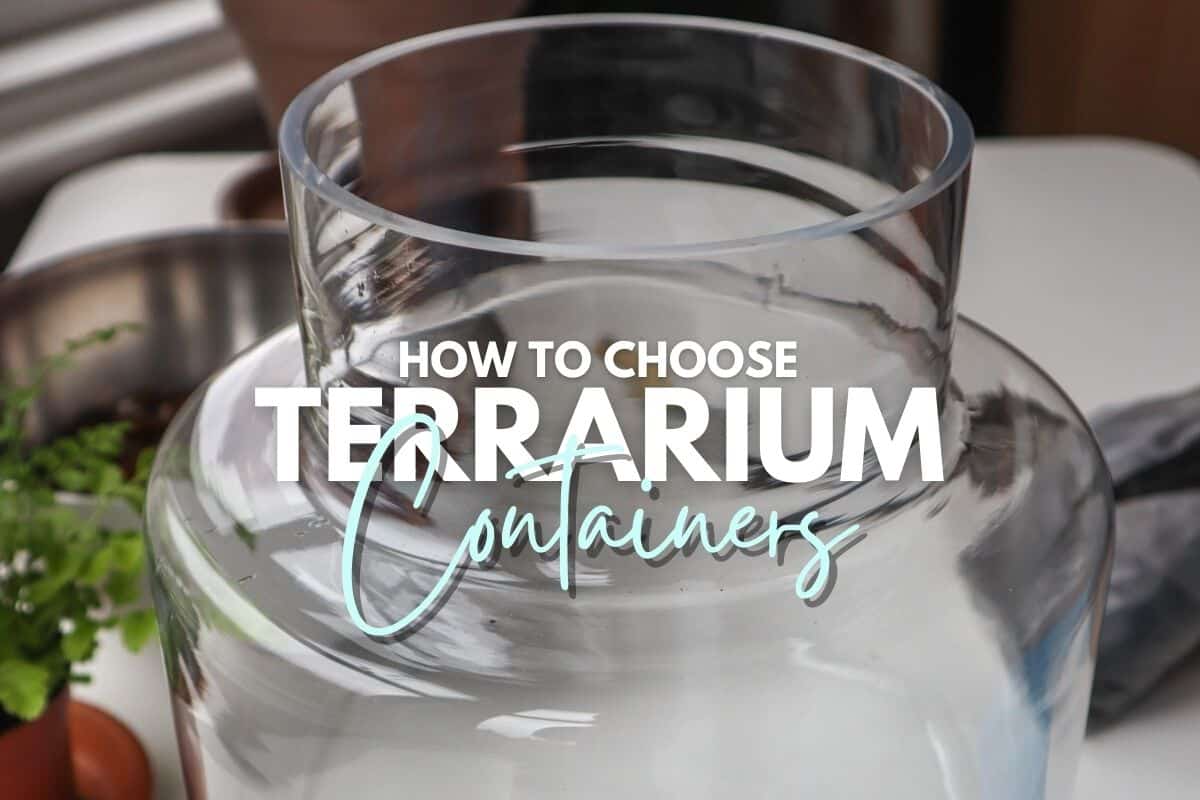
Terrarium Tribe is reader-supported. When you purchase through links on our site, we may earn an affiliate commission (at no further cost to you). 💜
Terrarium Shapes & Sizes
Terrariums really do run in all shapes and sizes.
All the weird and wonderfully shaped vessels in the world are potential terrarium containers, so it can be difficult to know where to start…
But, as you go on your hunt for your terrarium container of choice, there are four things to consider.
Let’s take a closer look.
1. The Size of the Container
There’s no maximum size for a terrarium – the sky’s the limit – but there’s definitely a minimum size for a fully functioning terrarium.
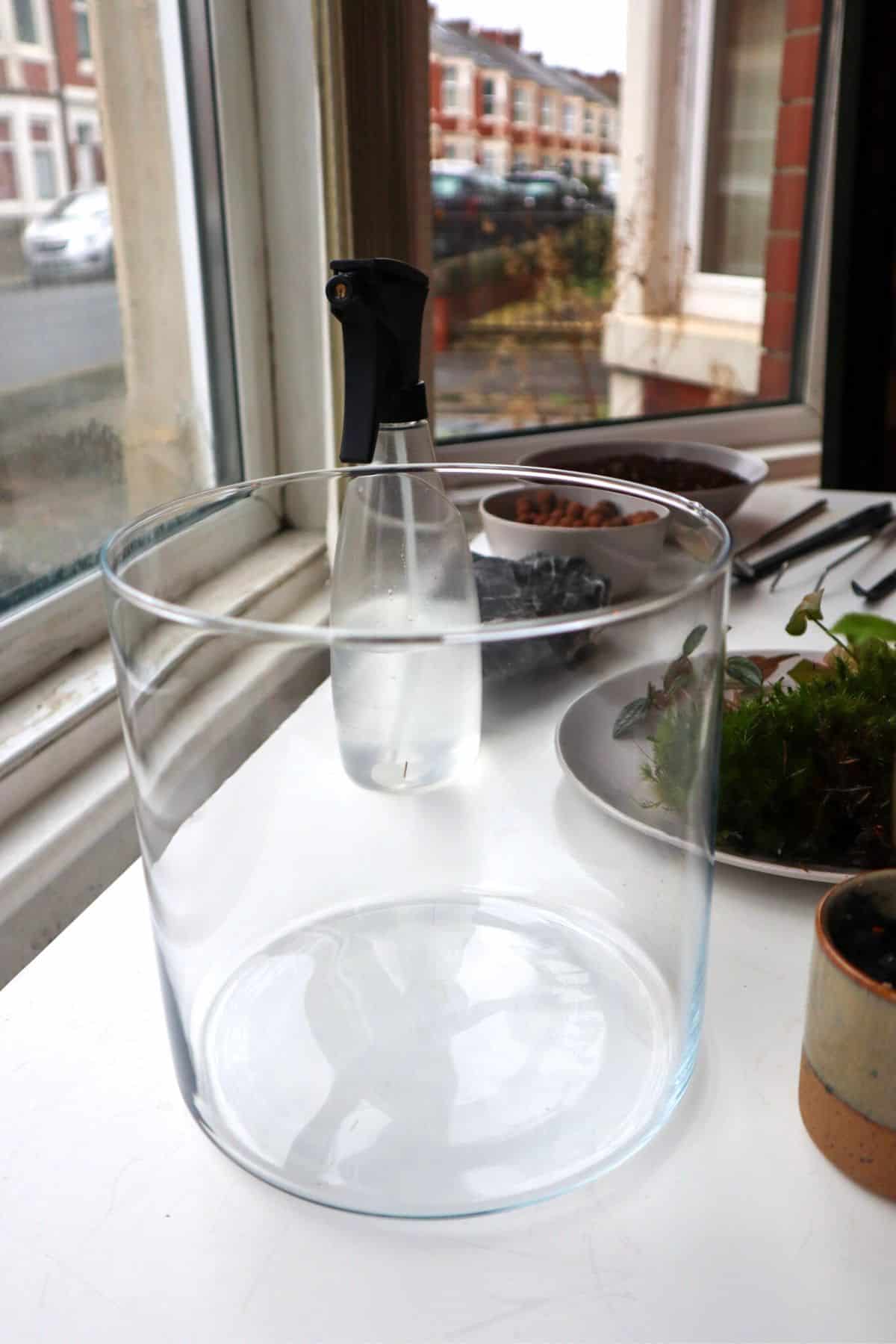
The size of the container will obviously be dictated by where it’s going in your house, but I’d definitely recommend going as big as you can.
Not just because bigger is generally better, but it’s actually better to give your plants more space and provide enough space for free gas exchange.
It’s recommended to be able to give the plants at least ⅓ of the terrarium as free space.
You’ve more freedom with a bigger container too. More space for plants, more decorations, interesting features, and creative elements.
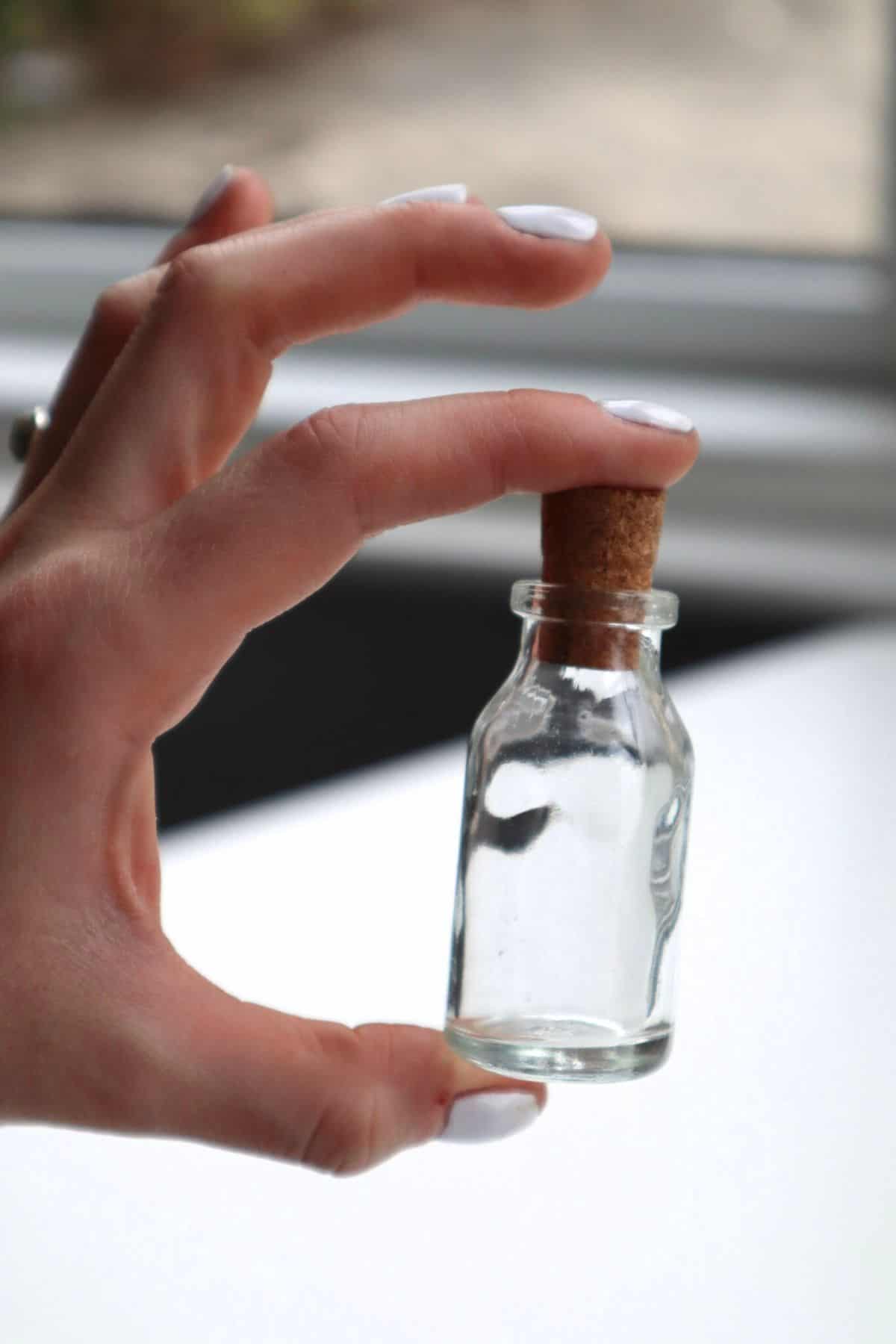
2. The Shape of the Container
You can get super creative with terrarium shapes (hell, it’s part of the fun!), but it’s important to remember that you still need a strong foundation and enough space for plants.
Containers with a uniform shape (e.g., a box or cylinder) tend to provide a consistent shape, so everything is nice and proportional.
Whereas something with a narrow base may not provide enough drainage or enough substrate for the plants to thrive.
It’s just something you’ll have to eyeball at the time.
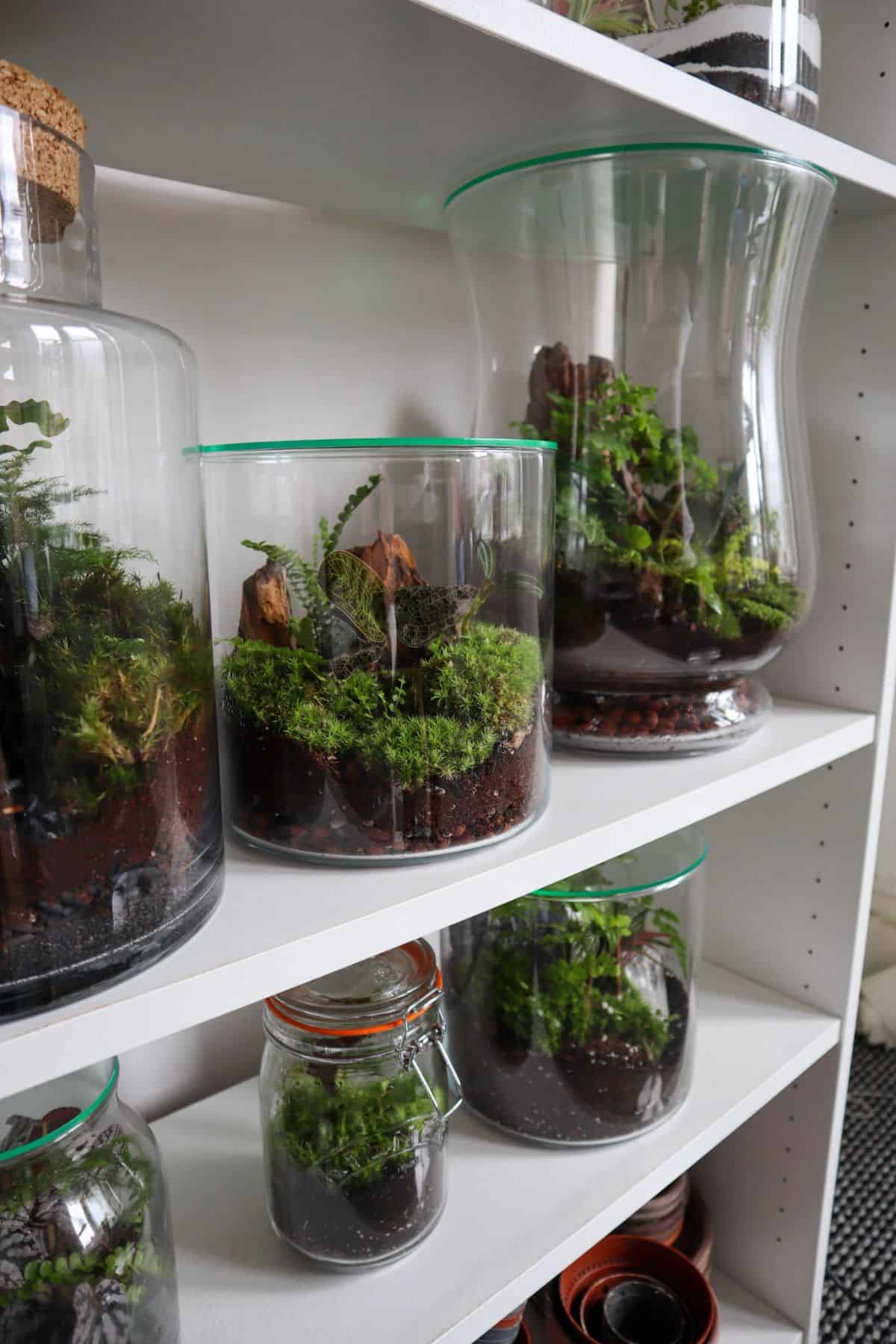
3. The Size of the Opening
Terrarium builders who like a challenge can opt for containers with a narrow opening.
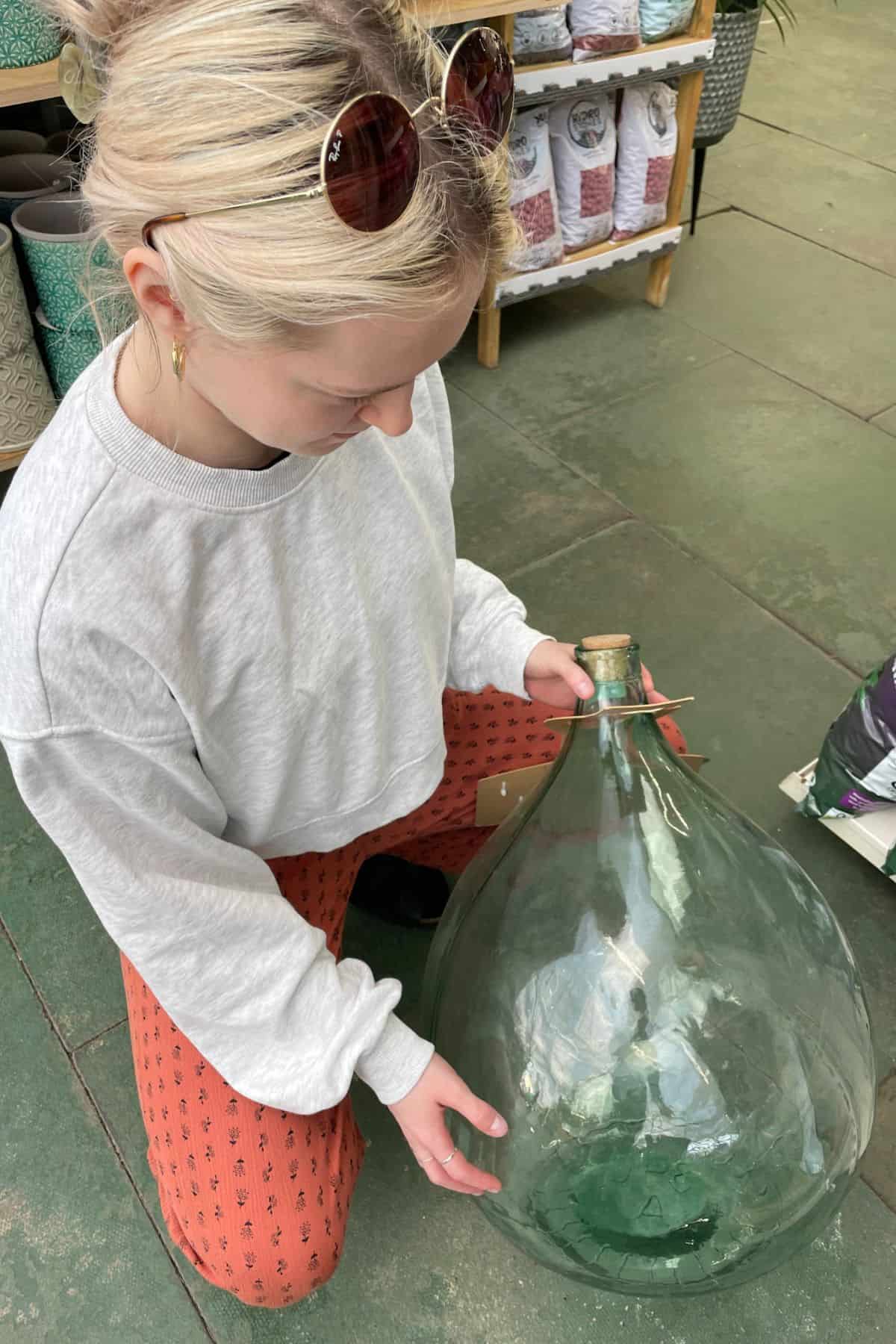
The more narrow the opening, the harder it is to get what you want exactly where you want it, and having the right terrarium tool kit is crucial.
👉 Read my bottle terrarium guide if you’re keen to try it.
For this reason, if you’re just getting started with terrariums, I’d recommend going for a container with a nice wide opening to give you lots of space to maneuver.
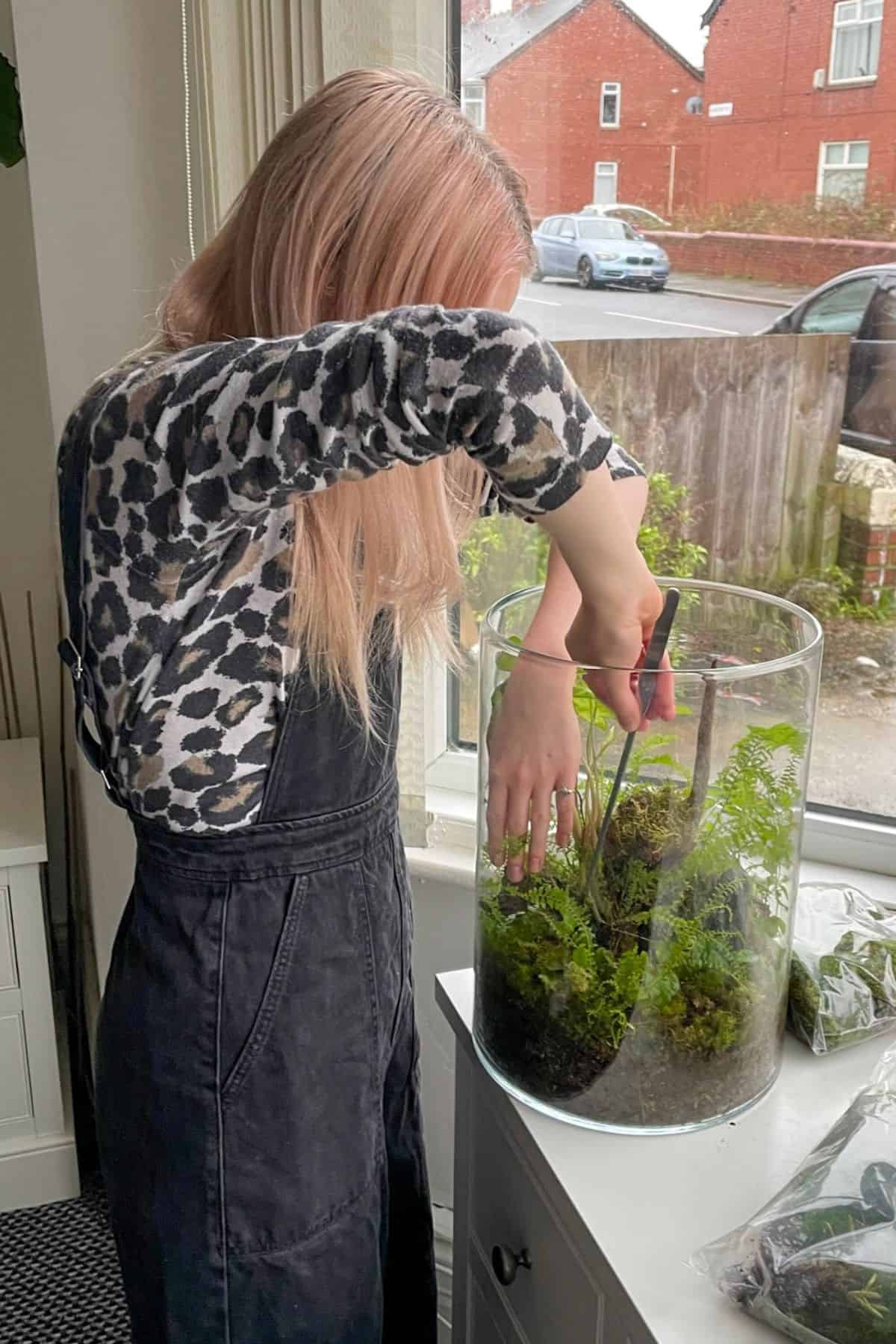
4. Container Lid Status
Naturally, you’ll need to be able to close your closed terrarium.
Of course, you can purchase purpose-made terrarium containers that have an inbuilt solution, but those options are often pricey, and sometimes you’ll find the perfect piece of glassware in the most unlikely of places.
If you find an awesome lidless container, don’t let that put you off using it.
It’s very easy to create a makeshift terrarium lid with some saran wrap and then source a cut-to-size perspex disc or cork stopper online.
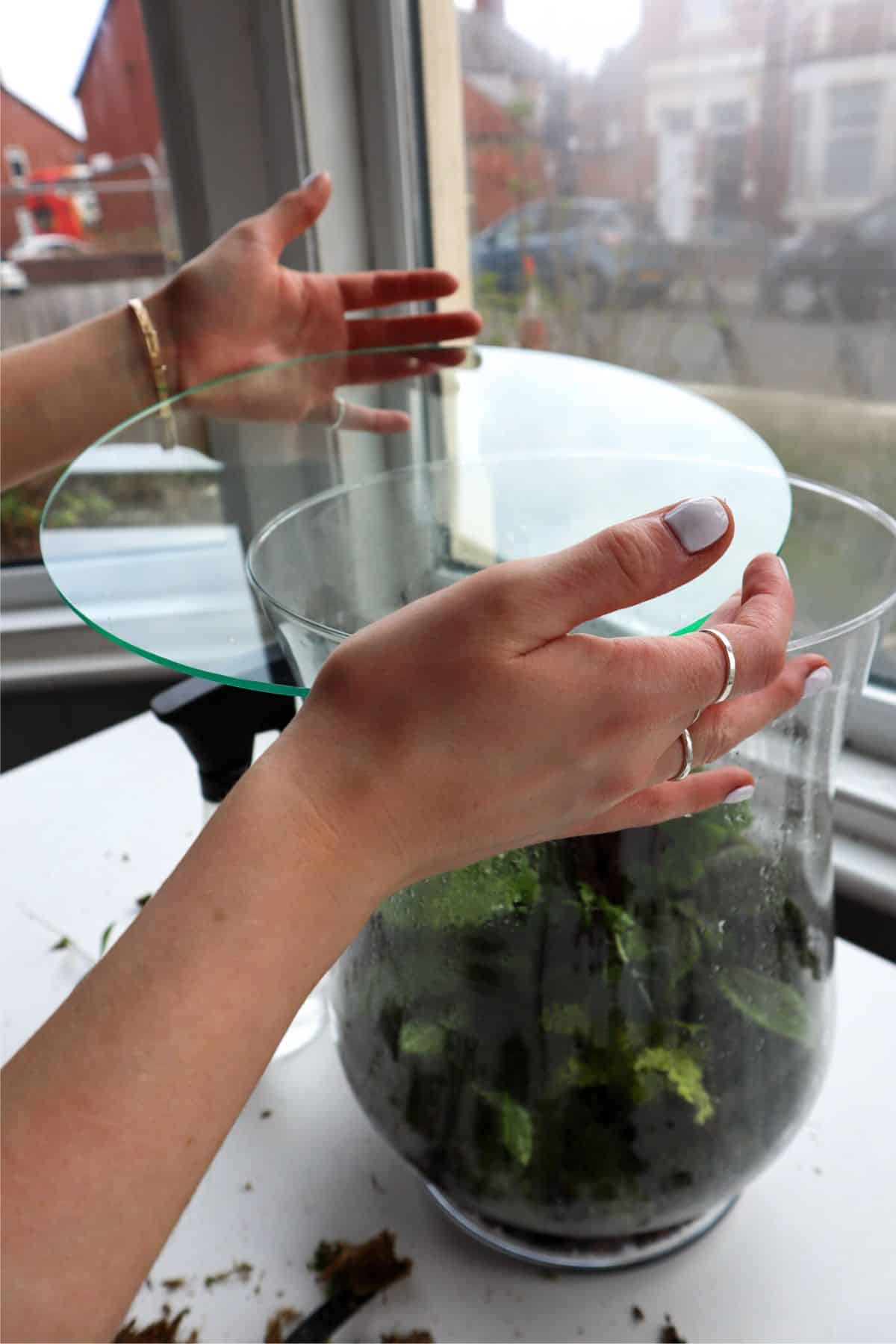
👉 Check out these custom-cut lids on Etsy.
Terrarium Container Materials
Terrariums tend to be made from just a few select materials, as they need to be robust, non-reactive, and fully transparent. That basically just leaves us with glass and plastic.
Transparency is important so we can see the plants (that’s the point, after all), but also because plants use the visible spectrum of light for photosynthesis.
Except for green, which they reflect – which is why they appear green to us. For this reason, you’ll need a container that’s clear or green. Any other colors will filter out parts of the visible spectrum (that your plants need).
Glass Terrarium Containers
Glass terrariums are the most common kind and what I’d recommend over plastic.
They’re great for all of the above practical reasons, but also because terrariums are ornaments too. And frankly, aesthetics count in this department. If I’ve created a beautiful plant ecosystem to display, I want it housed in an equally beautiful container.
If you run a Google image search for the word “terrarium,” there’s a good chance half the photos that pop up will be geometric terrariums. Contrary to what Urban Outfitters might suggest, there is more to terrariums than the copper pyramid.
Common Types of Glass Terrarium Containers
- Mason jars (check out our Jar Terrarium DIY Guide).
- Wardian cases (see our favorite Wardian Cases roundup).
- Demijohns.
- Geometric terrariums.
- Big vases – this is what I normally use!
- Fish tanks (see our fish tank terrarium guide for more).
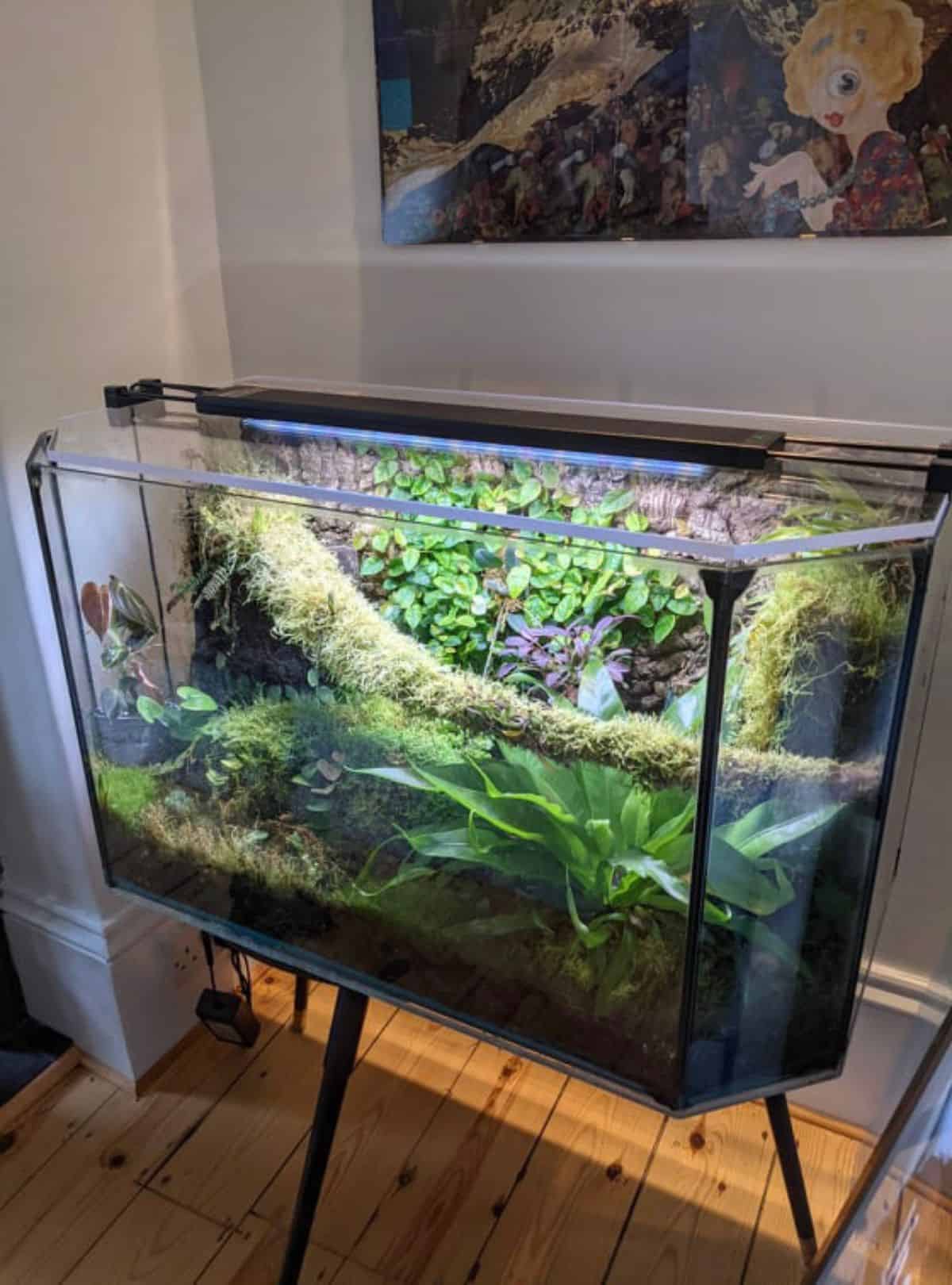
Plastic Terrarium Containers
If you’re wanting to do this DIY style, then upcycling a plastic container is an option.
With that being said, finding cheap glassware to upcycle is much easier than you might think. You can find some hidden gems in thrift stores, and there’s often a free fish tank on Facebook Marketplace.
👉 For more thrifty tips, check out my guide to creating a cheap terrarium.
The other thing to consider with plastic is that depending on the type of plastic used, there’s a possibility of toxic compounds leaching into the terrarium environment.
We’ve been warned by authorities not to leave plastic bottles in the sunlight due to leaching. Surely a plastic terrarium full of water is going to leach chemicals if left for years?
Interestingly, this 2015 study found that BPA actually increased the growth rate of plants,1 but extra plant growth isn’t exactly desirable in terrariums. Plus, the growth was correlated with high levels of stress hormones in the plants, so the actual health of the plants was adversely affected.
Where to Buy Terrarium Containers?
I swear, you can buy suitable terrarium containers from almost anywhere these days.
If you’re after a small terrarium, there are all sorts of things from the supermarket you could use, whereas choice is limited for larger terrariums.
Of course, Etsy and Amazon are reliable options, but any homeware store is likely to stock some sort of glass vase or jar, too.
In fact, if you love to hunt for a bargain, my favorite places to go are Ikea and TK Maxx (TJ Maxx in the States). I regularly find gems in there.
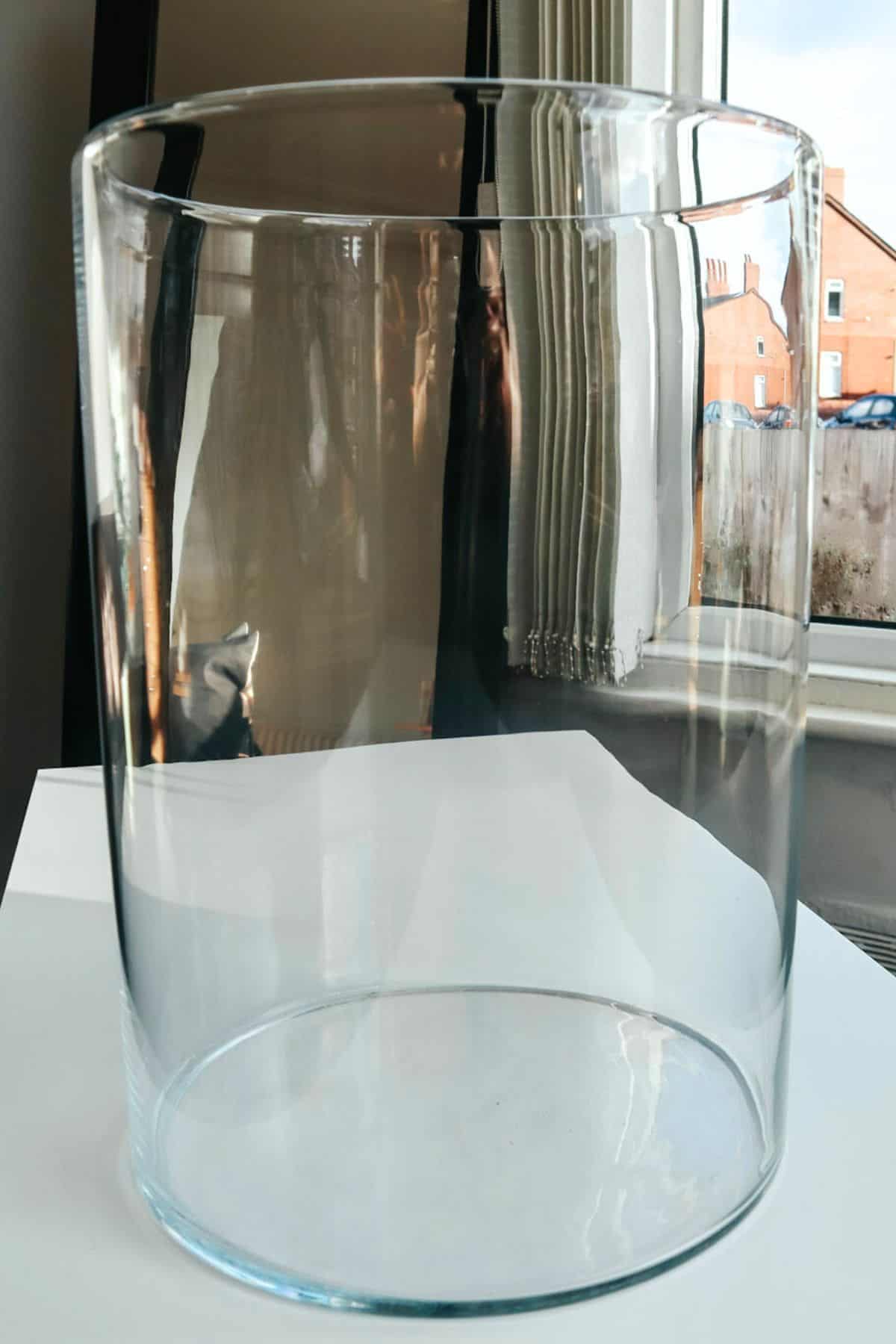
Or, you could just buy a bottle of your favorite wine or bourbon and go from there. A reason to buy more wine is always something I can get behind…
Now, Over to You
Hopefully, you’re feeling better equipped to pick the right terrarium container for you and your home.
Sure, there are a few things to consider, but don’t overthink it and get bogged down. Generally, if you get a large(ish) glass container that’s square or round – it’ll work!
You can get started with our beginner’s DIY Terrarium Guide. And if you already have your glassware sorted, why not check out the terrarium supplies for sale on our online store?
- https://www.ncbi.nlm.nih.gov/pubmed/26150296 ↩︎

I have found some really great glass containers for terrariums at local thrift shops and want to sterilize them before use. Is this necessary and if yes, what is the best way to do this to kill any germs but not harm future plants? (same question for used flower pots)
Hey Michael, yeah it’s always a good idea to clean down any new glass terrarium containers. Wiping down with isopropyl alcohol works to sterilise it, then you can finish with a microfiber cloth to remove any remaining debris.
I was under the impression that to make a true terrarium you need to have the container air tight. If that is so, don’t you need to only be looking at containers with lids?
Hi Lorrie, that’s right – tropical terrariums do need to sealed up to build humidity and function properly. Though I tend to find it easier to buy whatever glassware I find and get a custom acrylic disk cut to size instead (as nice things rarely come with lids in my experience).
I have an old round fish bowl and I was going to make a lid from wine corks but I’m not sure what glue to use so I won’t kill the plants inside. Any ideas? Thanks.
Superglue is perfectly fine to use with plants! Gorilla Glue seems to be popular, but anything cyanoacrylate-based should do the trick.
My age is well beyond outdoor gardening so I’m excited to find terrariums as a new hobby. Perfect for ‘little old ladies”. Thanks for sharing your expertise!
Now I’m off to find a container. I’ll be back for more of your suggestions soon.
Thanks again!